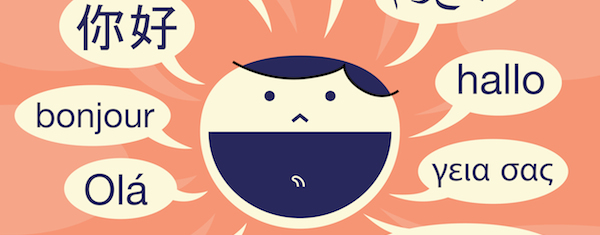Multilingual blogging involves making your blog posts readable by visitors with varying native languages. Even if you only blog in one language, you can still make your blog multilingual friendly through the use of translator software, multi-lingual plugins, and other online tools. Depending on what blogging platform you use, be it WordPress, Blogger, or other, there are several ways to make your content accessible to readers of all languages. Making your blog multilingual friendly will widen your audience, increase your overall traffic, and instill an inclusive environment that will appeal to many readers. Read ahead to find out the best methods for making your new or existing blog multilingual friendly.
Use a Comprehensive Blogging Platform
The readability and functionality of you blog depends largely on the platform it’s hosted on. The most popular option for writers wishing to start a blog is the Content Management System (CMS) WordPress. This blogging platform software can be installed on your own web hosting server, or be used with limitations from the WordPress website. WordPress is a great choice for multilingual blogs because of the availability of language-based plugins to assist in making your blog readable by all.

Other blogging platforms also have multilingual plugins and extensions. You can even install language translation extensions on HTML websites, and those built with Joomla or Drupal. Popular blogging platforms like Tumblr, Blogger, and Typepad may limit your options, as you won’t have access to install software to their servers. If running a blog on a hosted platform like Tumblr, you will likely need to create and upload manual translations of your posts using the Google Translate tool.
WordPress Options for Multilingual Blogs
WordPress is the most popular blogging software on the web. Many bloggers looking to start a blog that can be read worldwide seek information on multilingual options for the CMS. There are two main methods for creating a multilingual blog in WordPress: Maintaining varying language versions of each post on your server, and on the fly translations through the use of a plugin.
The first method for making your WordPress blog multilingual involves creating multiple versions of each post you create. Each version corresponds to a specific language, and is kept for future visitors to access. If you use this option you can create the multiple language posts using a WordPress Plugin or translator service. The downside to this option is that you will need several times the room in your databases that you’d otherwise need if you weren’t storing all language-specific files. This works best if you have unlimited space on your web hosting.
The second method of on-the-fly language translation is better for users with limited hosting space. For this to work you need to use a plugin like MultilingualPress that can detect the language indicator in your user’s web browser. The plugin automatically detects your user’s language and translates all of the content on your blog for them. This plugin, like many others in its category, contains over 150 languages and so provides a highly diverse translation service.
Use Plugins for Multilingual Blogging
Either method you choose to make your blog multilingual you will want to install a great plugin or extension to help along the way. WordPress users have no shortage of options in this area but some of the most popular are the aforementioned MultilingualPress and The WordPress Multilingual Plugin (WMPL.) These plugins are highly tested for accuracy, contain almost 200 languages each, and are universally compatible amongst WordPress API themes. The base version of the WMPL plugin costs $29 and comes with priority support, while the MultilingualPress plugin is free with online documentation.
Joomla users can find multilingual support for their blogs through the popular JA Multilingual extension. This extension is free to use and automatically converts all of the content on your blog to the reader’s detected default language. This is accomplished by browser tags and cookies, and allows your blog to remember your readers language preference for their subsequent visits. You can set JA Multilingual to translate your content using the Bing or Google translator services. This extension will also convert your menu and buttons text and any other text appearing your blog for enhanced accessibility.
Making your blog friendly to more than one language is a great idea for marketing, accessibility, and adding value to your content. Readers from all over the world will appreciate the extra step you’ve taken to ensure they can access your posts. Using built-in features, third-party plugins and extensions, and translating services are all viable ways to make your blog multilingual. Whether you decide to host several versions of each post on your own server, or allow translation services to create instant translations for your users, your readers will be grateful for the ability to access your content with ease. Combine several of these methods for a comprehensive approach and watch your blog traffic grow exponentially.
Republished by Imagincreation